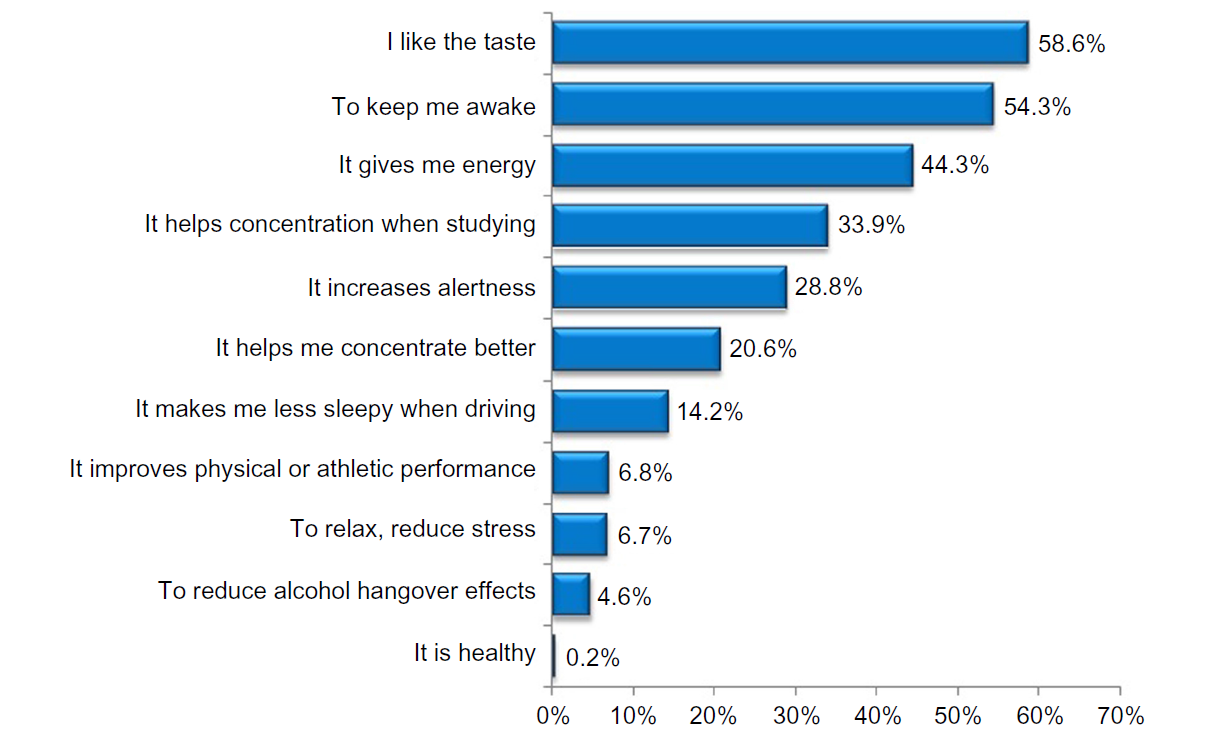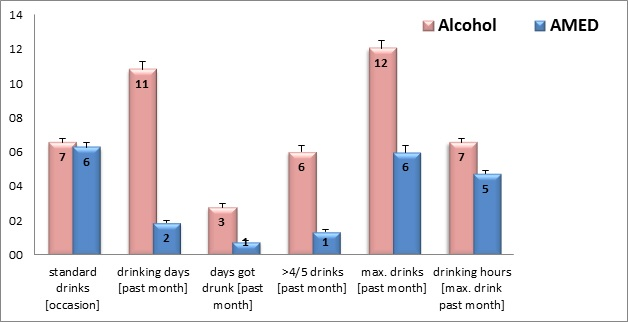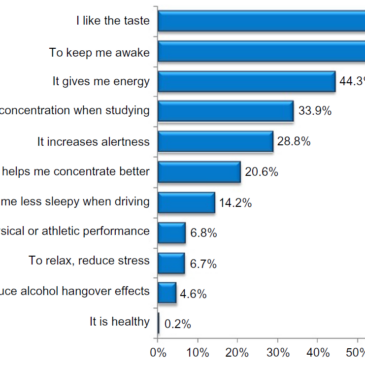Editor’s Note: This post was written by Luke Downey, PhD, Senior Research Fellow in the Centre for Human Psychopharmacology, Swinburne University of Technology. Dr. Downey recently completed the Division on Addiction Visiting Scholars Program.
Whilst energy drinks improve aspects of mental performance and feelings of alertness, recent articles suggest that energy drink consumption combined with alcohol may reduce perception of alcohol intoxication, or lead to increased alcohol or drug use (e.g., Marczinski & Fillmore, 2014). This issue of the DRAM explores students’ motives for consuming energy drinks, and how those motives relate to their levels of alcohol consumption (Verster, Benson & Scholey, 2014).
Methods
- Researchers utilized data from 2,329 college students (from approximately 70,000 contacted) who completed an online survey concerning patterns of alcohol consumption, motives for consuming energy drinks, and the consequences of consuming alcohol and energy drinks.
- Data from two groups of respondents were considered:
- Participants who consumed energy drinks but never mixed energy drinks with alcohol (energy drinks only group; n = 1,090), and
- Participants who consumed energy drinks and also consumed alcohol mixed with energy drinks (AMED group; n = 1,239).
- All participants indicated their reasons for drinking energy drinks. Within the AMED group, participants were classified as having neutral or negative reasons for mixing alcohol with an energy drink.
- Respondents classified as mixing for negative reasons (AMED-negative) endorsed mixing these beverages for at least one of the following reasons: “to get drunk”, “to prevent getting drunk”, “it feels like I can drink more alcohol”, “it feels like energy drinks reduce the negative effects of alcohol”, and “to sober up”. In past research, these reasons have been suggested to be associated with increased alcohol consumption. Neutral reasons were unrelated to alcohol consumption (e.g., “I like the taste.”)
- The authors explored all participants’ motives for drinking energy drinks. They compared AMED-negative participants with others. Then, they used paired samples t-tests to determine whether alcohol consumption within the AMED-negative subgroup differed between the occasions on which they only consumed alcohol versus those occasions when they consumed AMED.
Results
- As Figure 1 shows, across participants, the most frequently endorsed motives for consuming energy drinks (without alcohol) were “I like the taste” (reported by 58.6% of subjects), “To keep me awake” (54.3%), and “It gives me energy” (44.3%).
Figure 1. Reasons for drinking energy drinks (without alcohol), percentage ‘yes’ of n = 2326.

- Of the 1,200+ participants who mixed alcohol with energy drinks, 257 reported doing so for at least one of the five negative motives (AMED-negative). Those participants were more likely to be male, used more drugs and tobacco, and experience more negative alcohol-related consequences than other participants.
- Despite the fact that these subjects consumed AMED for negative motives, on the occasions when they drank AMED, as Figure 2 shows, they consumed significantly less alcohol and were drunk less often when compared to those occasions on which they only consumed alcohol.
Figure 2. Alcohol consumption with and without energy drinks among AMED-Negative Respondents

- Taken together, these figures and findings show:
- Consumption of energy drinks are mainly driven by consumers’ appreciation of their taste, and the positive effects of the drinks’ functional ingredients.
- A minority of students have negative motives for AMED consumption, and these students report other risk behaviors.
- Among this subset, overall alcohol consumption was reduced when mixing alcohol with an energy drink.
Limitations
- The sample includes Dutch college students from two institutions; therefore the results of this study might not be generalizable to students of differing universities or geographical location.
- The researchers gathered no information concerning ‘how important’ any of the recorded ‘motives’ for drinking were to the participants.
- The degree of drinking (was heavy drinking involved) was not adequately assessed.
- This study relied upon self-report data. The students may not have been comfortable in fully reporting their energy drink and alcohol drinking habits.
Conclusions
From the data presented, it appears that whilst Dutch students are drinking 6-7 drinks in drinking sessions, most do not report using energy drinks to increase their drinking or facilitate other ‘negative’ motives related to drinking. Students who do report mixing these drinks for negative reasons also exhibit other risk behaviours such as drug use and alcohol use that results in negative consequences. Thus, motives for AMED consumption might be an important marker of other risky behaviours.
— Luke Downey
What do you think? Please use the comment link below to provide feedback on this article.





Ben July 19, 2016
Good presentation of research results. Thanks for sharing.